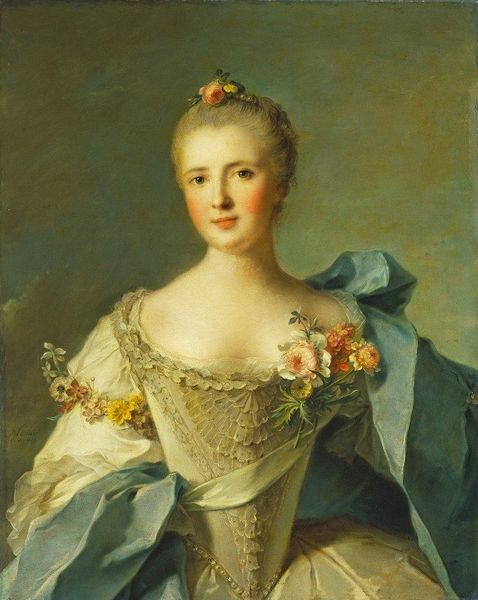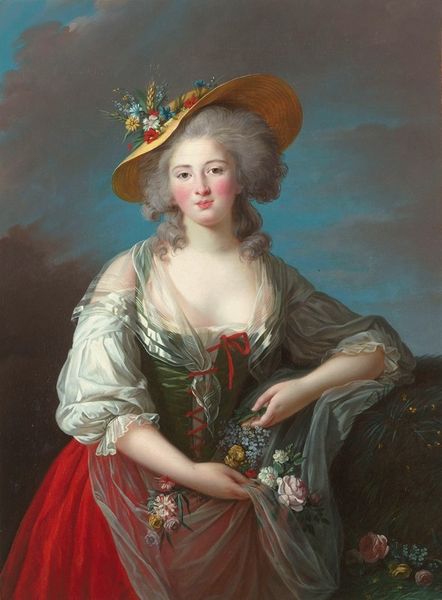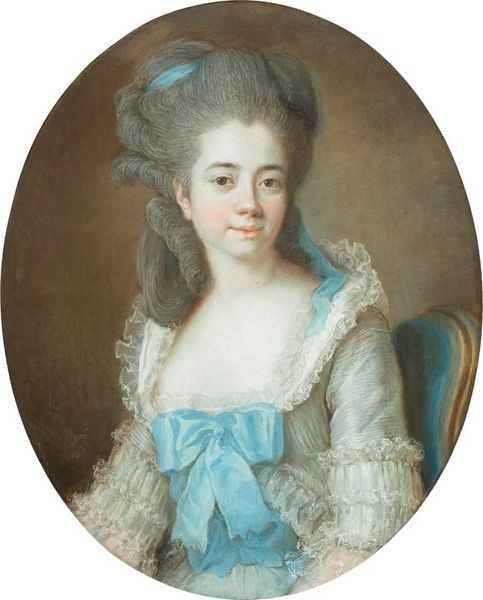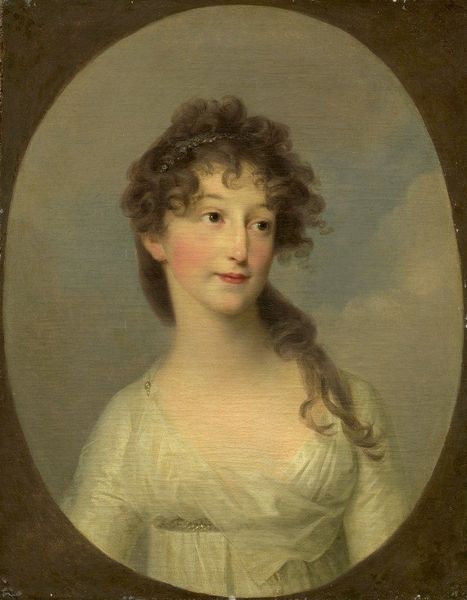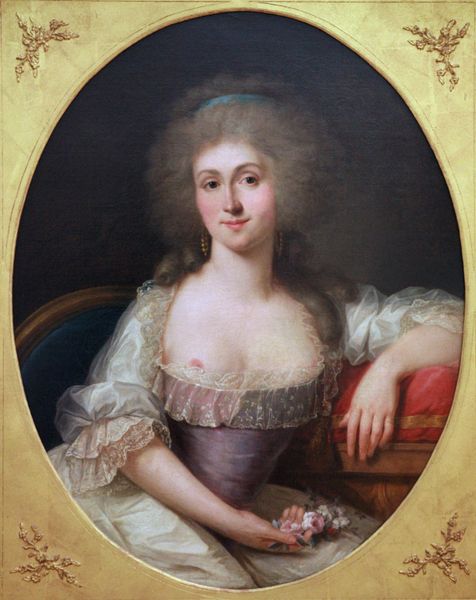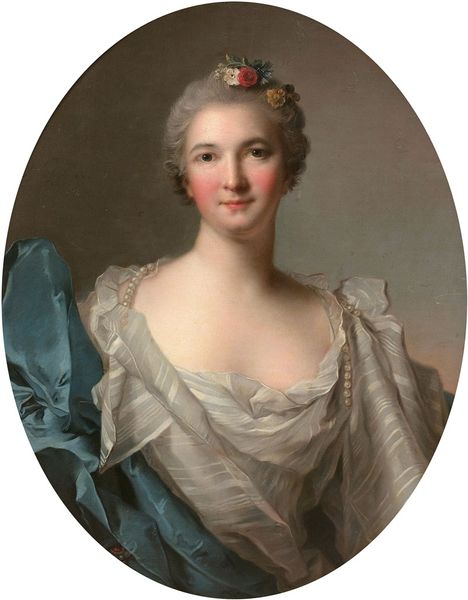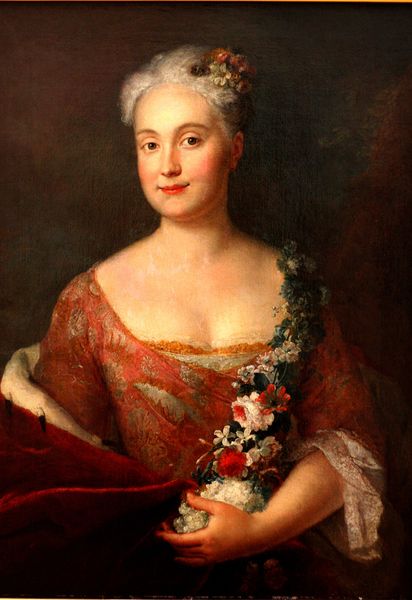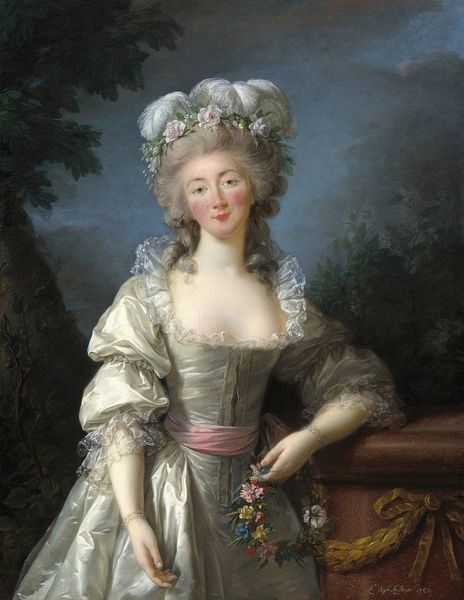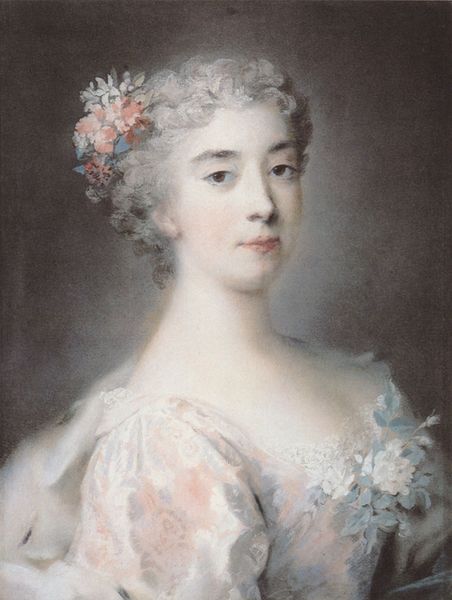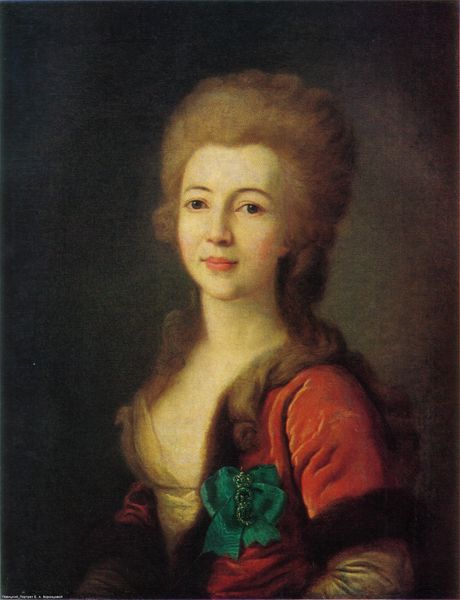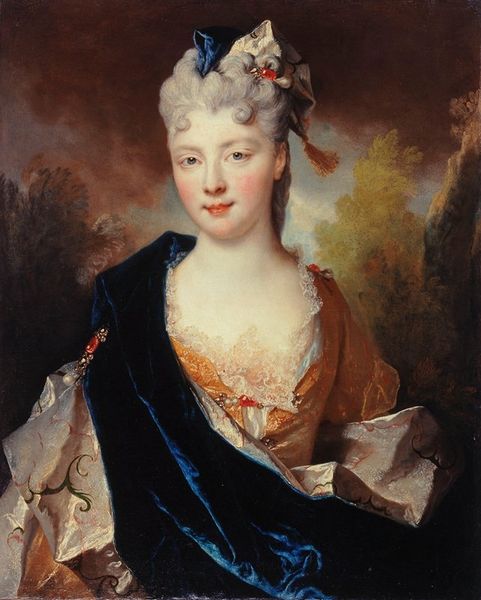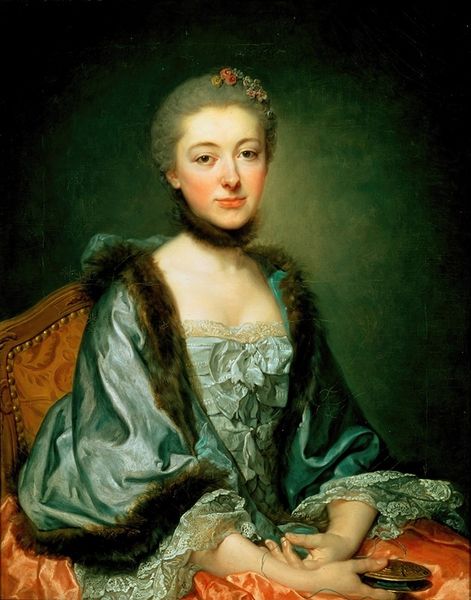
Portrait of a lady said portrait of Jeanne de Valois, Comtesse de la Motte
0:00
0:00
painting, oil-paint
#
portrait
#
figurative
#
painting
#
oil-paint
#
romanticism
#
rococo
Copyright: Public Domain: Artvee
Elisabeth Louise Vigée Le Brun painted this portrait, possibly of Jeanne de Valois, Comtesse de la Motte, using oil on canvas sometime in the late 18th century. It's a work that invites us to consider the power and representation of women in French society, particularly within the context of the aristocracy. The soft, almost ethereal treatment of the subject is typical of the Rococo style, which served as a visual language of courtly life, yet the very act of a female artist like Vigée Le Brun achieving prominence challenges the gendered norms of the French art establishment. The flowers in her hair were fashionable at the time. To understand this image better, we can delve into archival records, fashion history, and biographies of the figures involved. Doing so reveals the complex interplay between artistic expression, social expectation, and the politics of identity in pre-revolutionary France. By bringing such historical context to the artwork, we can appreciate how the personal and political intersect.
Comments
No comments
Be the first to comment and join the conversation on the ultimate creative platform.
